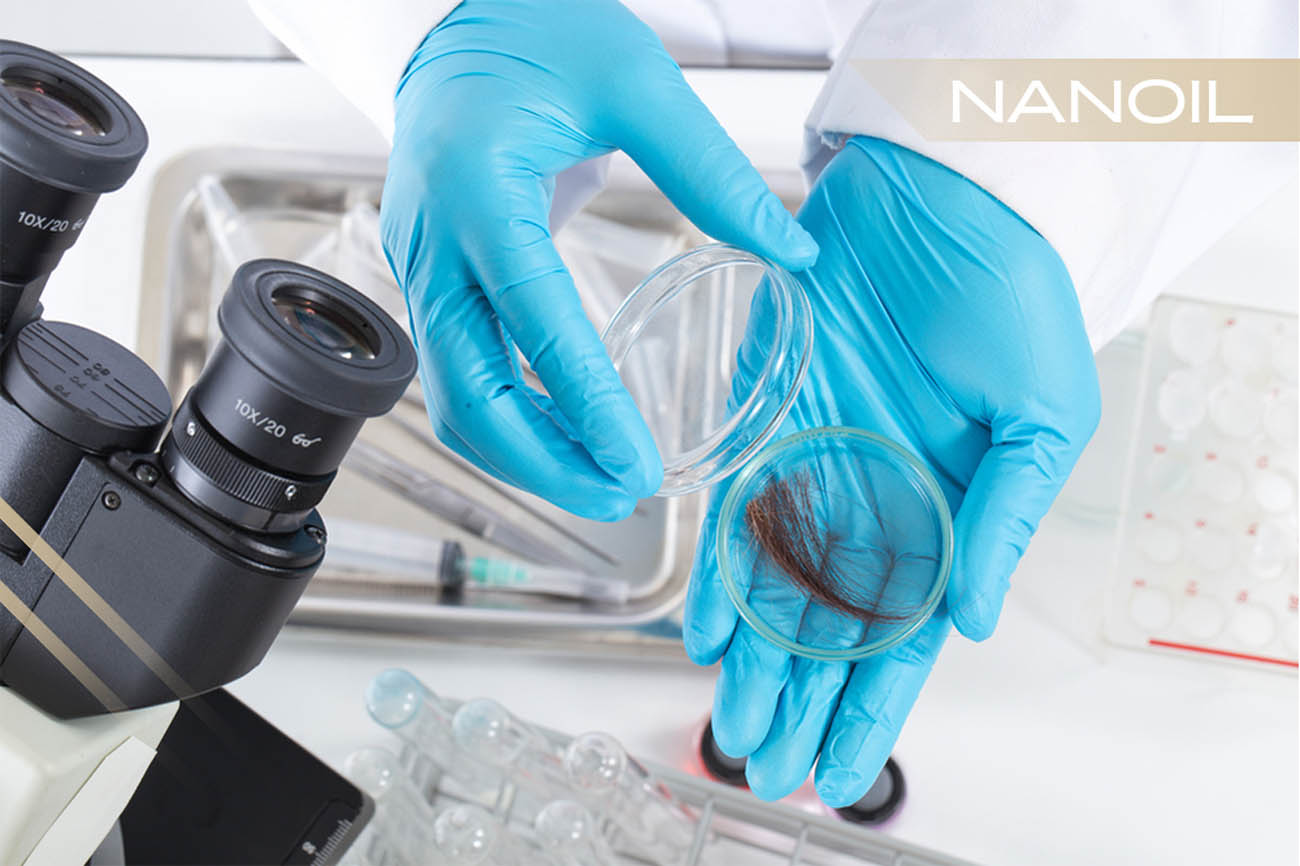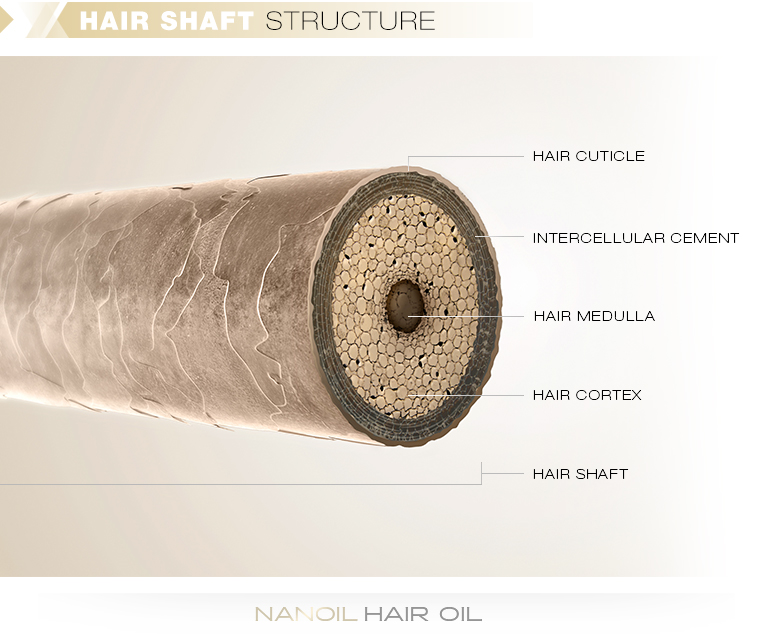- NANOIL Products
- Oils
- Face serums
- Hair masks
- Shampoos
- Hair conditioners
- Hair styling
- Hair Porosity Test
- Blog
- Contact

Healthy, luminous hair seems to be an impossible dream for many of you. It turns out that 3 in 5 women don’t know how to perform hair repair which gives desirable effects. How can you keep your hairstyle gorgeous? Let’s examine the hair shaft and take a look underneath – today we’re going to make you believe that you’re just one step away from an enviable hairdo.
The external epidermis (stratum corneum) is the part of scalp which we can see. It is made up of several layers of overlapping, flattened, non-nucleated cells. The epidermis doesn’t have plain structure. To be more precise, its structure resembles roof tiles. In the lower layer, the ‘tiles’ cling to each other whereas in the upper (outermost) layer – they are loose (so that the epidermis can exfoliate). The appearance and condition of the stratum corneum should be very important to us: the scalp doesn’t look good when it’s affected by dandruff, excessive dryness, irritations, pimples or too much sebum.
The hydro-lipid layer on your skin determines the state of the skin and makes up an extremely crucial barrier which keeps various pathogen, damaging substances from penetrating the hair bulbs. The hydro-lipid film locks water in the epidermis and keeps the desirable level of moisture.
The hydro-lipid layer is a characteristic emulsion built of sebum, a dose of lipids and the secretion of sweat glands. This natural barrier helps maintain properly acidic pH on your scalp (which ranges from 4.2 to 5.6). Disturbance of this natural protective layer makes scalp sick (excessive sebum, dryness, dandruff, etc.), as well as affects the looks and health of hair bulbs. The bad condition of stratum corneum and disturbed hydro-lipid layer translate into serious hair problems.

Hair shaft is made up of three layers: medulla, cortex and cuticle.
What is a hair shaft actually? It is the visible hair part growing out of the skin. Simply put – the most important element to us. This is the very part that we care for the most. That’s why we take action to care for the hair shaft – we spoil and pamper it with conditioners, balms and other products: all for gorgeous, strong, healthy hair.
We’ve already mentioned that the hair shaft is the fragment on the hair surface. Still, it is not plain; it is built of a few parts whereas its appearance and structure have a huge impact on the condition of hair and decide about the way you should fix up your hair care routine.
Hair cuticle is made up of colorless keratin cuticle scales which are exceptionally important and have a noticeable influence on the state and looks of your hair. Moreover, they reveal a lot about the effective hair care. Cuticle scales define your hair and are the criterion which determines its condition known as porosity – tight cuticle layer means smooth, shiny hair. The scales surround the hair in a peculiar way, looking like pine cones.
A single hair is made up of 7-10 layers of colorless cuticles. They may have different resistance to external factors, including chemical processing, weather conditions and mechanical damage, which matters a lot in hair care.
Intercellular cement is located somewhere between the slightly varied cuticle scales. It is made up of ceramides, free fatty acids and carbohydrates. The intercellular cement is a layer which protects inner and more fragile keratin scales from damage, prevents the loss of moisture and makes sure the hair shaft has a permanent water supply.
Hair cortex is an inner part of the hair shaft, hiding right behind the cuticle. This fibrous structure makes up around 80% of the hair mass. An individual hair cortex cell (macrofibril) is built of hundreds of keratin microfibrils which form long, tangled, microscopic chains.
Between the chains, there is space which is filled with keratin made up of cystin, groups of free glutamic acid and irregular amino acids. This kind of keratin is hydrolyzed (its molecules bind with water molecules) thus it maintains the sufficient level of moisture in hair.
Hair cortex is responsible for hair bounce and resistance to stretching. The melanin grains, present in the cortex, give the hair a proper color; the pigment intensity depends on the hair color.
The chains of keratin are linked by 4 special cross linkages which are known as the bridges.
Hair medulla occurs only in very thick hair. It is built of 1-2 sequence(s) of flat cells which contain few pigment grains and aren’t as cornified as the cortex cells. Hair medulla often includes small gas spaces which are responsible for the gray or white shade of hair.
How to enjoy strong, vital hair astonishing with beauty and shine? Most of all, think of its structure, condition and appearance, or:
Keratin cuticle scales on the hair surface are the brilliant criterion for evaluating hair condition and health. When cuticle layer is loosened, hair damage develops more quickly.
Doing a hair oil treatment is the first extremely easy and effective way to follow a brilliant hair care routine. Natural oils can excellently cooperate with the hair type, structure and appearance. They work in a multidimensional way and are able to:
You should also be aware that the molecules of oils penetrate your scalp and get to the hair bulbs where they ensure full care – they reinforce, stimulate to work, nourish. As a result, hair stops falling out and grows more quickly.
Hair care which respects both the external and internal hair structure is the key to a beautiful hairdo, healthy and vital strands. Your hair receives exactly what it needs to grow strong and gorgeous.
Leave your email address and we ll notify you when it s back in stock.
Comments: #0